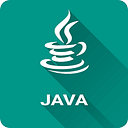Member-only story
Using CQRS Architecture Pattern in Microservices with Java

Hi All , This story is open to everyone; non-member readers can click this link to read the story.
Welcome , Imagine you’re working on a complex microservices project, and every time you need to update or query data, you find yourself tangled in a web of dependencies and performance bottlenecks.
Frustrating, right? I’ve been there too. That’s when I discovered the power of the CQRS (Command Query Responsibility Segregation) architecture pattern.
Using CQRS in microservices, especially with Java, can transform how you handle data operations. It separates the read and write operations, allowing each to be optimized independently. This not only enhances performance but also simplifies the codebase, making it more maintainable.
In this story, I’ll walk you through the essentials of implementing CQRS in your Java-based microservices. We’ll explore the benefits, the challenges, and some practical examples to get you started. Whether you’re a seasoned developer or just starting out, I hope my experiences and insights will help you see the potential of CQRS in your projects.
Today, We will go through an Overview of CQRS Architecture Pattern in Microservices with Java and the benefits it brings to Application Developers.
Let’s Get Started …
Introduction:
In the world of software architecture and design patterns, the Command Query Responsibility Segregation (CQRS) pattern has gained significant attention for its ability to address complex business requirements and scale applications effectively. This post takes a deep dive into the CQRS architecture pattern, accompanied by Event-Driven Design (EDD), and its implementation in microservices using Java.

By the end of this post, you will have a comprehensive understanding of CQRS and how to leverage it to build robust, scalable, and maintainable microservices.
- Understanding CQRS Architecture Pattern
